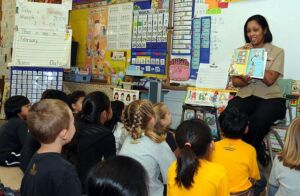News
Danish classrooms getting more and more crammed
This article is more than 10 years old.
Teachers’ union blames budget cuts for oversized classes

Classes are getting too big, say teachers (photo: Robert Stirrup)
The number of public school pupils who attend classes with over 28 students in them has nearly doubled in the last five years.
Danmarks Lærerforening, the teachers’ union, said that municipal budget cuts were to blame. In the school year that ended in the summer, there were 9,000 students in classes with more than the 28 permitted by law.
Mega classes
“This is serious,” said Dorte Lange, Danmarks Lærerforening’s vice president.
“We need to focus on how to create quality education for students rather that creating stopgaps dictated by savings at the municipalities.”
In addition to the many classes with over 28 pupils, the number of classes with over 30 students, which are sometimes called ‘mega classes’, has also increased.
Looks good on paper
Theoretically, there should be no more than 28 students per class without the approval of the municipal council. And any class of over 30 pupils must be approved by the Education Ministry.
“If the politicians want to boost academic performance, they need to ensure a better classroom framework,” said Lange. “I think that 24 students per class is the absolute maximum.”
READ MORE: Danish students struggling with maths and science
Lange said that international research showed that classes with more than 24 students have a negative effect on student learning, and that large classes make it “very difficult for the teacher to challenge each student”.
Lange said that class sizes have been increasing steadily since 2009, and up to 140,000 pupils at the public schools currently attend classes with 25 or more students.










































